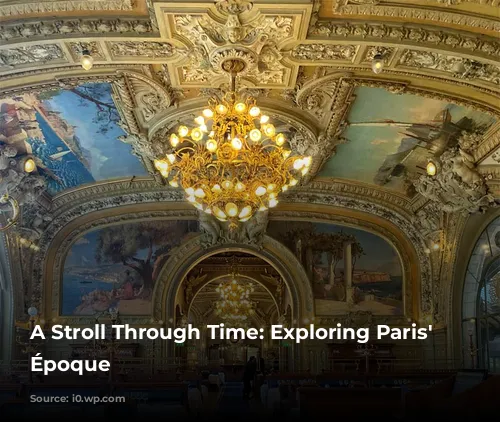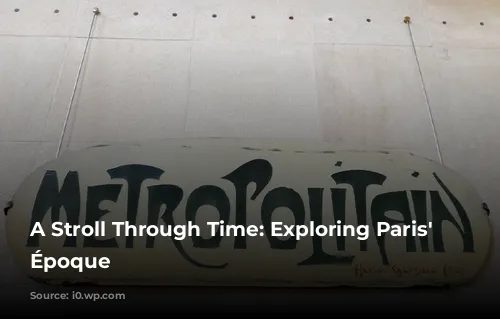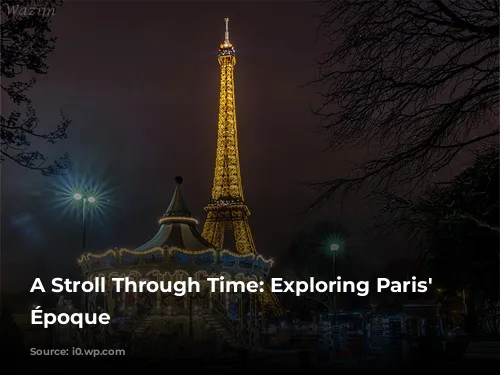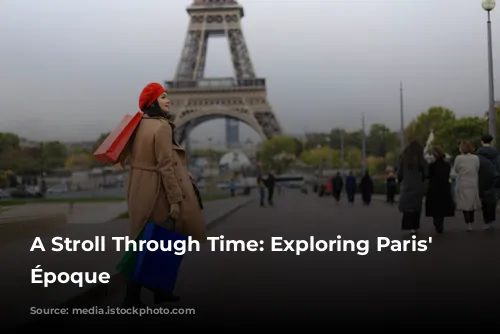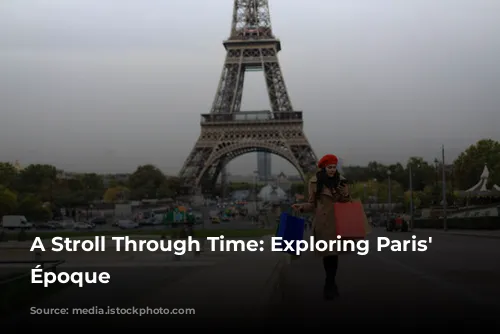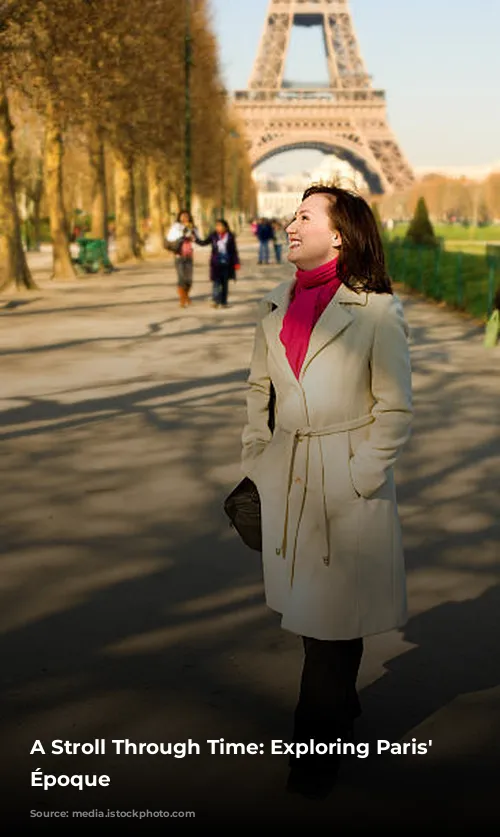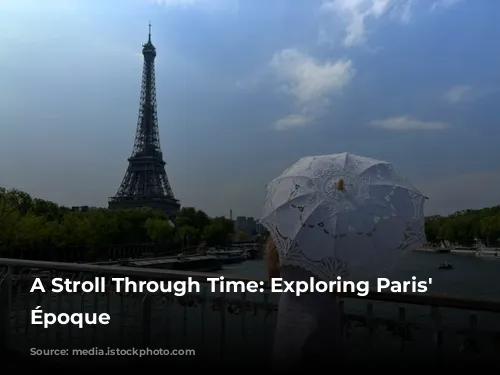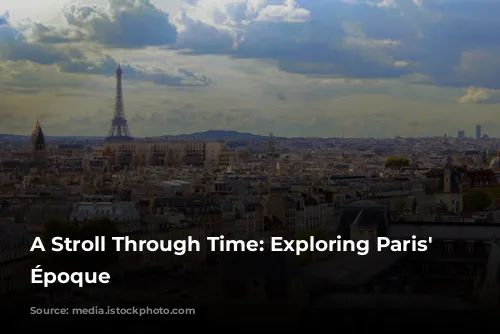Imagine yourself in Paris, the City of Lights. Picture the iconic Eiffel Tower reaching towards the sky, the grand facade of La Samaritaine, and the classic metro entrances adorned with dark green wrought-iron railings and vintage lamps. These are all reminders of the Belle Époque, a golden age of Parisian life that continues to cast its spell on the city today.
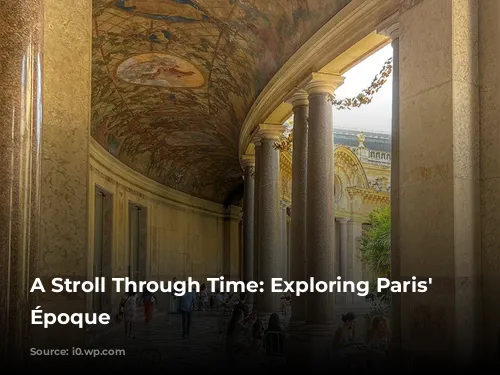
The Golden Years of Paris
The Belle Époque, literally meaning “Beautiful Era,” was a period of immense excitement and innovation that spanned four decades, from the late 19th century to the outbreak of World War I. This was a time of rapid progress, where Parisians embraced new technologies, revelled in artistic creativity, and enjoyed a quality of life that had never been seen before.

A City Transformed
The Belle Époque saw Paris transform into a modern metropolis. The Grands Boulevards, designed by Baron Haussmann, became bustling hubs of commerce and culture, filled with shops, cafes, and theatres. The metro, inaugurated in 1900, replaced horse-drawn carriages, revolutionizing urban transportation. Matisse and Toulouse-Lautrec were at the forefront of the artistic movement, their works reflecting the vibrant energy of the era. Cinema was just beginning to emerge, captivating audiences with the Lumiere Brothers’ pioneering films.
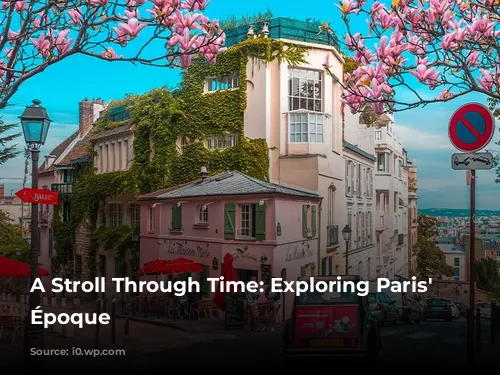
The Architectural Legacy of the Belle Époque
The Eiffel Tower, a marvel of engineering, was constructed to showcase the latest in technological innovation. It became a symbol of the Belle Époque, a testament to Parisian ingenuity and ambition. The Gare d’Orsay, the first station in the world designed for electric trains, further solidified Paris’ position as a leader in progress. Today, the Musée d’Orsay, housed in the former station, still bears the marks of its heritage, with its stunning Art Nouveau clock gracing the restaurant.
Art Nouveau, an architectural style that celebrated flowing curves and natural motifs, blossomed during the Belle Époque. It is evident throughout Paris, from the iconic entrances of metro stations designed by Hector Guimard, adorned with elegant cast-iron railings and decorative canopies, to the facade of La Samaritaine.
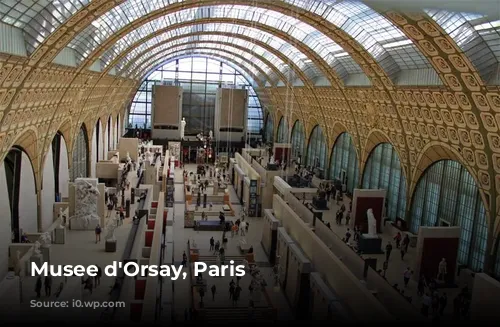
A Culinary Journey Back in Time
Le Boullion Julien, a monument historique in the Rue du Faubourg St-Denis, offers a glimpse into the culinary world of the Belle Époque. Its elegant interior features a mahogany bar, tables under a glass-canopied ceiling, and walls lined with large mirrors. The intricate decorations include brass fittings, plaster mouldings, and motifs of peacocks, flowers, and herons on the ceiling. This restaurant is one of the many Bouillon establishments that opened in the 19th century, offering quality food at affordable prices.
Le Train Bleu, located at the Gare de Lyon, is perhaps the most opulent Belle Époque restaurant in Paris. Its extravagant decor, designed to entice affluent travellers, embodies the pinnacle of Art Nouveau. The golden ceiling, punctuated by chandeliers, and the walls adorned with paintings create a truly awe-inspiring ambiance. The restaurant offers the finest brasserie cuisine, served on impeccably laid tables with crisp white linens, heavy cutlery, and sparkling glasses. It’s no surprise that Brigitte Bardot and Jean Cocteau chose to dine here.
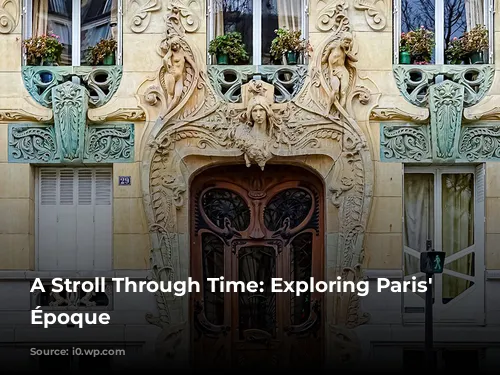
Following the Path of Belle Époque Paris
If you’re seeking a taste of the Belle Époque in Paris, here are some places to explore:
Take a stroll across the Alexandre III bridge, a graceful structure built in 1900. Its single arch, elaborate decorations, and stately street lamps are all quintessential Belle Époque. The bridge was constructed to connect the Grand Palais and the Petit Palais, two grand exhibition halls built for the Universal Exhibition of 1900.
Visit the Petit Palais, which houses the City of Paris Museum of Fine Arts. Its beautiful interior, with its spiral staircases, curved iron railings, stained glass windows, and ceiling murals, transports visitors back in time.
Explore the area around the Opéra. While the Opéra Garnier, opened in 1875, is a testament to the grandeur of the Second Empire, the Grands Boulevards surrounding it were at the heart of the Belle Époque excitement. This is where the Lumiere Brothers introduced the world to cinema in 1895, and where grand department stores like Printemps and Galéries Lafayette emerged.
Step inside Printemps, where you can enjoy a meal at the Bleue Coupole restaurant, located under a magnificent stained glass canopy. At Galéries Lafayette, admire the glorious central dome, a masterpiece of Art Nouveau stained glass, and enjoy a refined snack at the café offering a “Vue sur Coupole”.
The Abbesses metro station is one of the best-preserved examples of Art Nouveau in Paris. Its spectacular glazed canopy and elegant wrought-iron railings perfectly capture the spirit of the Belle Époque. The nearby Montmartre district was also a vibrant center of life during this period, with artists and musicians gathering in cafes and revellers flocking to dance halls and cabarets like Le Chat Noir, the Moulin Rouge, and the Follies Bergères.
Visit St Jean de Montmartre, one of the few Art Nouveau churches in Paris. This turn-of-the-century church, built with reinforced concrete and red brick, reflects the new industrial era. Its interior, with its patterned brickwork and ceramic decorations, is a testament to Art Nouveau style.
Explore the Musée de Montmarte, which offers a fascinating glimpse into the history of Montmartre during the Belle Époque. You’ll find early photographs of the Moulin Rouge and its dancers, period posters for venues like Le Chat Noir, and a section on the innovative shadow puppet shows of the era.
As you wander the streets of Paris, keep your eyes open for the echoes of the Belle Époque. From the elegant architecture to the grand cafes and bustling boulevards, this era continues to shape the city’s character, reminding us of a time of creativity, innovation, and Parisian joie de vivre.
